Death at Thirty Thousand Feet : A Well Thought Out Scream by James Riordan
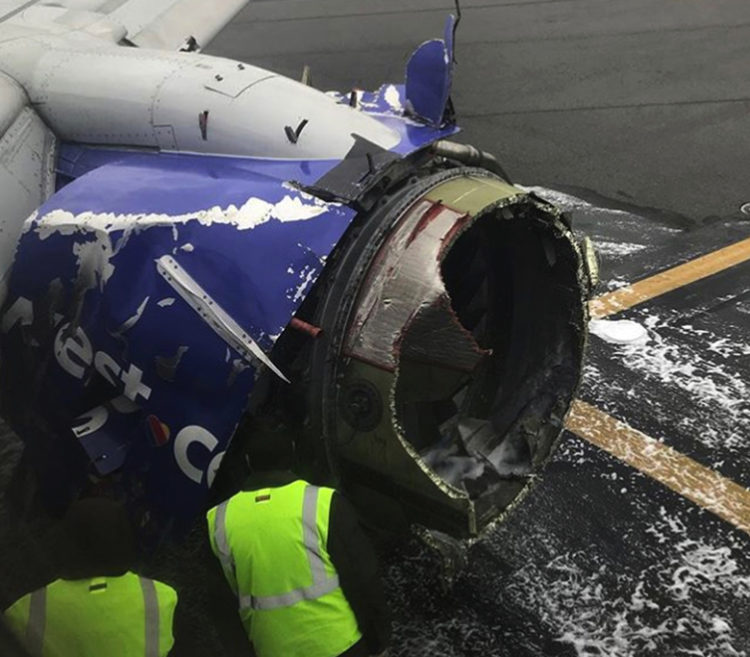
It’s funny how before something very unusual and quite terrible happens, there are always a bunch of people saying “Don’t be silly. Don’t worry about such nonsense. These things just don’t happen.” Well, yeah, they do. They happen a lot actually. Of course, when they happen, the same people that said one shouldn’t worry about such an unlikely event happening all say the same thing — “Well, that was really unusual, quite out of the ordinary. Things like that almost never happen.” Yes, they do happen. There is no guarantees about anything. Personally, I put my fate in the hands of God. The rest of you do too. You just may not know it as such.
Last week, an engine blew on an airplane and nearly sucked a woman into the night through the hole in the plane. The only that stopped that from happening was the quick reactions of her fellow passengers who literally grabbed her and pulled her back inside. The trauma ended up killing her anyway, but at least she died on the ground and not screaming while hurtling through the air all the way to certain death on the ground.
National Transportation Safety Board investigators examine damage to a Southwest Airlines plane that suffered catastrophic engine failure on April 17, 2018, killing a mother of two and forcing an emergency landing (AFP Photo/Handout)
Southwest Flight 1380 suffered a serious engine blowout 20 minutes into the flight at 32,500 feet, forcing an emergency landing in Philadelphia. The Boeing 737 operated by Southwest was en route from New York to Dallas when it suffered a serious engine blowout. The shrapnel broke a passenger window and penetrated the fuselage, forcing an emergency landing in Philadelphia. It was the first passenger fatality due to an accident on a U.S. airline in more than nine years, and the first in Southwest’s history. This was not an older plane. In fact, the Boeing 737 is considered the reliable mainstay of daily domestic flights around the country and the world.
I first head of it when I received a text from a friend asking if the “woman killed on the plane was related to me.” That’s because her name was Jennifer Riordan, a 43 year old bank executive (I did not know her but I’m sure we were related as all Irish who spell their names Riordan were originally O’Riordans back in Ireland). In addition to her death, several other passengers were injured when the left engine exploded with such force that shrapnel penetrated the aircraft’s fuselage and broke a window in the passenger cabin, causing depressurization and the deployment of oxygen masks.
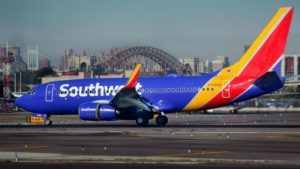 In preliminary briefings, National Transportation Safety Board (NTSB) Chairman Robert Sumwalt said that inspection of the damaged engine revealed that one of the titanium blades on the big fan had broken off at the root, and that there was evidence of metal fatigue at the site where it broke.
In preliminary briefings, National Transportation Safety Board (NTSB) Chairman Robert Sumwalt said that inspection of the damaged engine revealed that one of the titanium blades on the big fan had broken off at the root, and that there was evidence of metal fatigue at the site where it broke.
He said metal fatigue is a major problem. “There are supposed to be inspections to look for potential cracks,” he said. “There need to be proper procedures in place to inspect for them.” Sumwalt said the inlet cowling that surrounds the fan was found on the ground in Bucks County, about 60 miles from the airport.
The last fatal accident on board a U.S. carrier was the Colgan Air crash near Buffalo, New York in February of 2009 which that killed fifty 50 people. Southwest’s only previous fatal accident was in 2005, when a 737 landing in Chicago slid off a snowy runway onto an adjacent highway, killing a boy in a passing car.
Several airlines voluntarily sped up safety inspections after the incident and the Federal Aviation Administration announced it will order inspections within two weeks. “The directive will require an ultrasonic inspection of fan blades when they reach a certain number of takeoffs and landings,” the FAA said. “Any blades that fail the inspection will have to be replaced.”
This action, however, followed months of haggling between the manufacturer and airlines over the deadline for completing inspections on engines common to the popular Boeing 737, an industry workhorse. The proposal resulted from a similar Southwest engine failure in August 2016. Problems with fan blades occasionally breaking off, which typically result in unscheduled landing rather than passenger injuries, extend beyond the 737 and the engine manufacturer CFM International. An FAA order Tuesday immediately restricted flights of 787 aircraft with a certain type of Rolls-Royce engines, after “several engine failures” and reports of cracked fan blades. Investi-gators from the National Transportation Safety Board have focused initially on a broken fan blade – number 13 of 24 – in the failed engine. Cracking from metal fatigue, or a weakening of the metal from the heat and stress of spinning to push air through the engine, was visible on the broken stump, according to Robert Sumwalt, the safety board chairman.
But investigators must still determine what caused the fatigue and whether there was a manufacturing flaw, Sumwalt said. The cracking wasn’t visible from the exterior of the fan blade, according to Sumwalt. That’s why airlines decided to speed up ultrasound inspections of fan blades, to spot problems before engines fail.
Southwest, which flies 737 aircraft exclusively, had already announced after the Monday failure that it would inspect all the similar engines in its 700-plane fleet within 30 days. United Airlines executives also said during an earnings call Wednesday that they would inspect 698 similar engines in their fleet.
But Southwest also said the failed engine didn’t technically fall under the FAA inspection proposal in August.
Sumwalt couldn’t say Wednesday whether the engine qualified under the proposal because part numbers change over time. But he said investigators would track down the inspection status while studying engine maintenance records.
The FAA proposal resulted from an August 2016 engine failure on a Southwest flight from New Orleans to Orlando, which diverted to Pensacola, Fla. Engine debris tore a 5-inch-by-16-inch hole in the fuselage above the left wing, but didn’t injure anyone inside the cabin.
Even after the FAA proposal in August, airlines disputed how many engines were at stake. Southwest called FAA’s estimate of 220 engines needing inspection “vastly understated,” and United said the number could “be much higher.”
Southwest, for example, said it identified 109 engines qualifying for inspections. But the airline said without tracking blade numbers, it would have to inspect 732 more engines to comply.
Southwest, United and Delta Air Lines each sided with FAA’s proposed 18-month deadline to complete inspections. American Airlines suggested 20 months.
But CFM, which is jointly owned by GE and Safran Aircraft Engines of France, urged a 12-month deadline.
The FAA hadn’t acted on the proposal before the Tuesday incident.
In a teleconference Tuesday afternoon, Southwest Airlines Chief Executive Gary Kelly called it “a very somber day.” Early reports from passengers on board Flight 1380 described a terrifying scene as the air pressure at the broken window sucked the woman partly out through the opening. That set off a desperate scramble by fellow passengers and flight attendants to drag her back inside the plane. “The top half of her torso was out the window,” said Max Kraidelman, 20, a college student who was on the flight. “There was a lot of blood because she was hit by some of the shrapnel coming off the engine after it exploded.” The woman was unconscious when pulled back into the cabin. “They were doing CPR on her and using the defibrillator while we were landing,” Kraidelman said. “They were working on her while everyone else had their oxygen mask on.”
Meanwhile, other passengers tried to block holes in the fuselage with jackets. Passenger Marty Martinez told CBS News that many passengers wept and screamed during the plane’s rapid descent. “It was the scariest experience,” Martinez said.
The shrapnel damage to the plane’s fuselage and photos of the damage suggest this was a dangerous “uncontained engine failure.” Such incidents occur about three or four times a year worldwide, according to the NTSB. But Sumwalt said it isn’t immediately certain that this was such a failure. The engine pods, or nacelles, that surround a jet-engine core have strengthened protection rings designed to keep shrapnel from flying out sideways into the wing or fuselage. While it’s clear in this case that metal debris did come out of the engine and hit the fuselage, Sumwalt said it’s too early to be sure how that happened. It’s possible the shrapnel came out the back of the engine rather than penetrating those protection rings, which technically would not be an uncontained failure.
Still, photos of the damaged left engine show the inlet cowl that surrounds the fan at the front completely gone and the nacelle panels covering the engine core farther back shredded and ruptured. The missing engine inlet cowl resembles the damage in a previous Southwest 737 accident in August 2016, though this time the rupture of the nacelle behind the inlet is much more extensive. The 2016 engine blowout occurred on a flight from New Orleans to Orlando, Florida, with 99 passengers and five crew on board and forced an emergency landing in Pensacola. The NTSB investigation into that accident concluded that a titanium engine-fan blade had also broken off due to metal fatigue, flinging debris that made a 5-inch by 16-inch hole in the fuselage just above the left wing and causing the passenger cabin to depressurize.
737-200 JT8D engine with original cowling design
However, in that case, the interior of the passenger cabin was not penetrated. After that accident, engine-maker CFM International issued a service bulletin to all airlines recommending an ultrasonic inspection of certain fan blades and, if they fail the inspection, the replacement of those parts. The service bulletin says the inspection can be done in two man hours and doesn’t require the engine to be taken off the wing. A year after the accident, in August 2017, the Federal Aviation Administration (FAA) proposed an Airworthiness Directive that would make those inspections mandatory. The FAA noted that though the fan-blade failure was contained by the engine case, “there was subsequent uncontained forward release of inlet cowl and other debris.”
737-800 CFM56 engine with ovoid “hamster pouch” inlet
The proposed directive stated that on engines that have flown more than 15,000 cycles, the fan blades would have to be inspected within six months of the rule being finalized, while on those with fewer cycles the blades would be inspected within 18 months. Eight months later, the FAA still has not finalized that directive. An FAA safety engineer, who asked for anonymity because he spoke without authorization from the agency, said that seems an unreasonable delay. “In the notice, the FAA proposed inspections within six months,” he said. “How can you wait so long to finalize the rule?” The engineer added that if maintenance is not mandatory, some airlines will put it off until the next major overhaul. Engines are routinely overhauled every 30,000 flights.
737 MAX 9 CFM LEAP-1B engine with 787-like engine chevrons
The European Aviation Safety Agency (EASA), the counterpart to the FAA in Europe, last month did finalize an Airworthiness Directive requiring airlines operating in Europe to perform the inspections recommended by CFM. It’s not known whether the recommended blade inspections were done on the engine involved in Tuesday’s accident. Kelly, the Southwest CEO, said the airplane had undergone a routine maintenance inspection two days earlier, on April 15. And he said the engine that ruptured had been in service for 40,000 flights, with its last overhaul 10,000 flights ago. “There’s no information there was any issue with the airplane or the engines,” he said.
Sumwalt said that Tuesday’s accident may not be related to the 2016 accident. He said that Kelly assured him that Southwest will immediately begin enhanced ultrasound inspections of the engine-fan blades on its entire fleet of about 700 Boeing 737s. Aside from the recurrence of a broken engine fan blade, the accident also raises the question of how the engine inlet cowl failed and was stripped away entirely in two separate 737 accidents. “That’s not supposed to happen,” said the FAA engineer. “The inlet cowl is not supposed to come apart.”
In February, a fan blade broke off in flight on a much larger jet powered by a Pratt & Whitney engine — a Boeing 777, United Airlines Flight 1175 from San Francisco to Honolulu — and similarly resulted in the complete loss of the inlet cowl. That plane made an emergency landing in Honolulu and no one was hurt. The engine inlet cowl is part of the airframe and Boeing’s responsibility.
An NTSB investigation team flew to Philadelphia Tuesday afternoon for an on-site inspection. The damaged engine will be removed and shipped to an NTSB facility for teardown and detailed examination. The plane in Tuesday’s accident was an 18-year-old 737-700. However, the engines may have been swapped out for maintenance and so could be younger. More than seven thousand Boeing 737s are in service around the world “The 737 is the workhorse of the airline industry,” said Southwest’s Kelly. “The airplane in my opinion is proven. It’s very reliable. It has the greatest success of any airplane type over a very long period of time.”
Kelly said the death of the passenger was “a tragic loss” and pledged to support her family. He also commended the pilots and flight attendants “for their swift action and for safely landing this aircraft.” “They handled the situation magnificently,” Kelly said.
The CFM56 engine on Boeing’s 737s is manufactured by CFM International, a joint venture between GE and Safran of France, and is one of the most reliable jet engines in aviation history. That specific engine model has been in service since 1997 and has flown for 350 million flight hours, said CFM spokeswoman Jamie Jewell. She added that the engine-maker’s worldwide team is expressing “deepest sympathies and condolences” to the family of the passenger who died and to those injured. The NTSB will direct the accident inquiry, with Boeing and CFM providing technical assistance. Sumwalt said the extensive investigation will likely take a year to 15 months to complete.


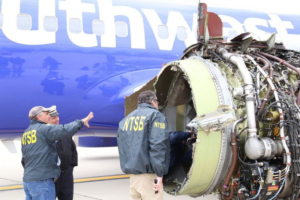

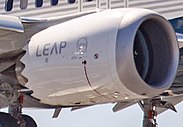
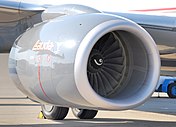
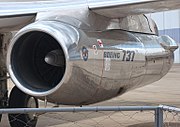

No Comment